



This archive addresses questions concerning the administration of justice, the adversary process, and the developing relationship between law and the social sciences, humanities, and sciences. These records are interesting on the human level - they are not just abstracts on legal issues, they are valuable historical documents in their own right.
This collection includes all circuits, including the major ones:
It aims to address questions such as: How much was the work of sociologists, psychologists, and historians cited? What attention did the courts pay to those citations? What nonlegal evidence was brought to court or cited? Did the court pay attention?
Researchers will be able to gain insights into legal reasoning used by the parties in advocating their position and to identify the authorities used to support an argument.
The briefs in this collection are not readily available - this is effectively a rescue operation, opening material that is inaccessible to many researchers. Law and humanities libraries that serve scholars and students in twentieth-century American social history and politics will find this archive of special interest.
The variety of information in the records and briefs includes:
This release is part of our ongoing enhancements to the user experience - and we are sharing a Preview Experience within the current interface.
The updated tools offer new functionality to address user feedback, focusing on the need to move between distant and close reading. This includes interactive visualizations and inspect panels that allow the examination of high-level patterns across content sets, and then the ability to drill down to both grouped and individual documents for close reading. For example, a new Parts of Speech group by capability lets customers compare parts of speech across authors, content types, document types, publishers, and source libraries in a customizable column layout.
With this release, the following tools and sections will join Sentiment Scores, NER, and Ngrams tools in the Preview Experience that is still under development:
Document Clustering
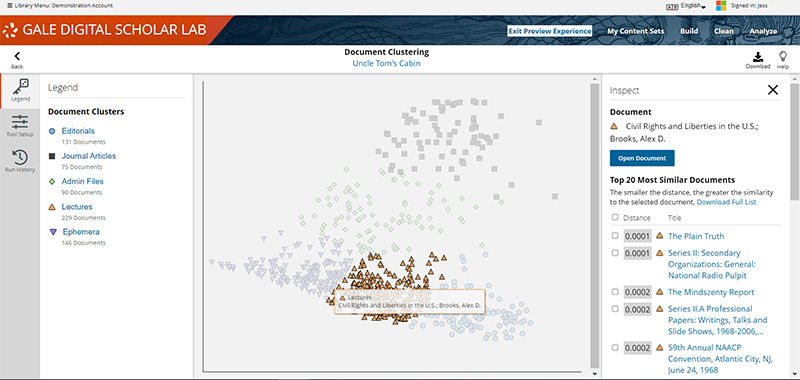
Topic Modeling: Topics and Topic Proportions

Parts of Speech
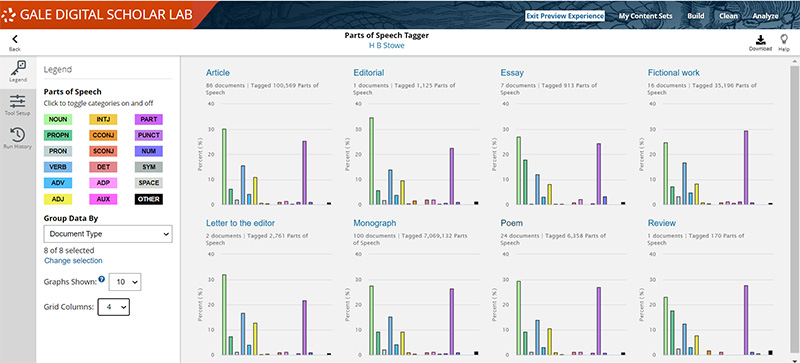
Built largely with the student researcher in mind Learning Centers for Gale Primary Sources support teaching and learning with digital primary sources.
The goal of the Learning Centers is to orient new users with the content and topics available in our unique digital archives; spark inspiration for new research topics; and provide guidance and best practices for searching, browsing, citing, and reusing primary sources. The Learning Centers provide an all-in-one instructional tool that helps students get acclimated with a primary source database.
You can access the Learning Centers in these products from the main toolbar:
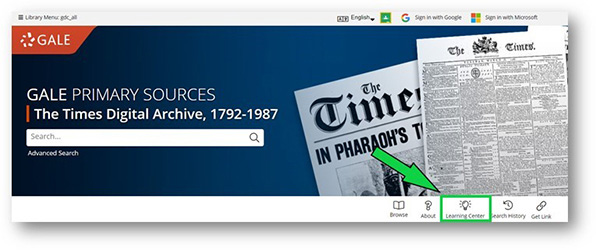
Workflow steps are based on the learning objectives outlined in the ACRL/SAA Guidelines for Primary Source Literacy:
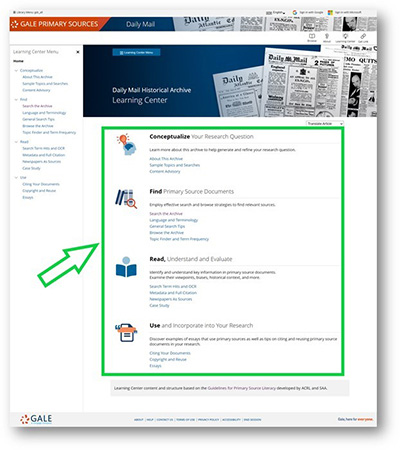
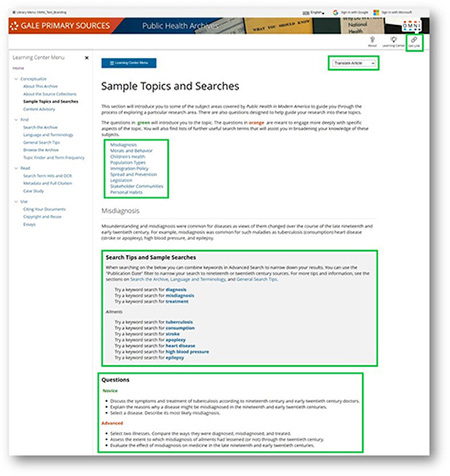
Download sets of digital assets and print files to help you raise awareness of the archives available at your library. Digital assets are downloaded as a .zip folder, and print files are downloaded individually*. For customers who wish to order the print resources, contact your local representative to check availability.
For archives that consist of multiple parts, you can download the assets for the overall series, or for the individual parts that are currently available at your library.
DIGITAL: Social media images | HD display screen | Announcement copy (editable) and header image for internal communications | QR code
PRINT: A3 and slimline posters | A6 Postcards | Bookmarks